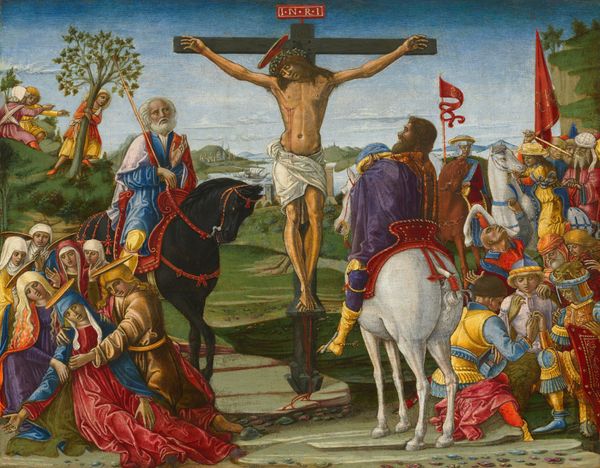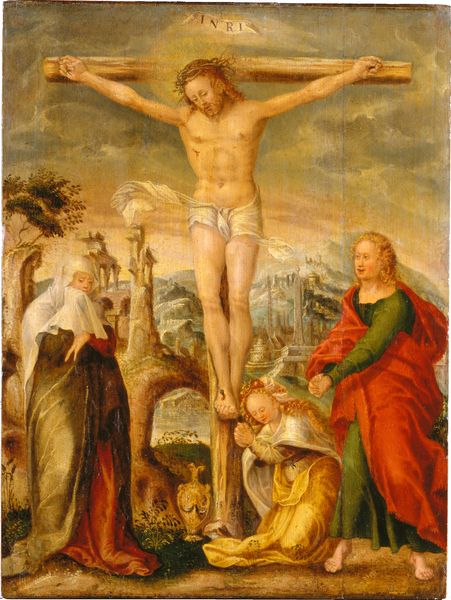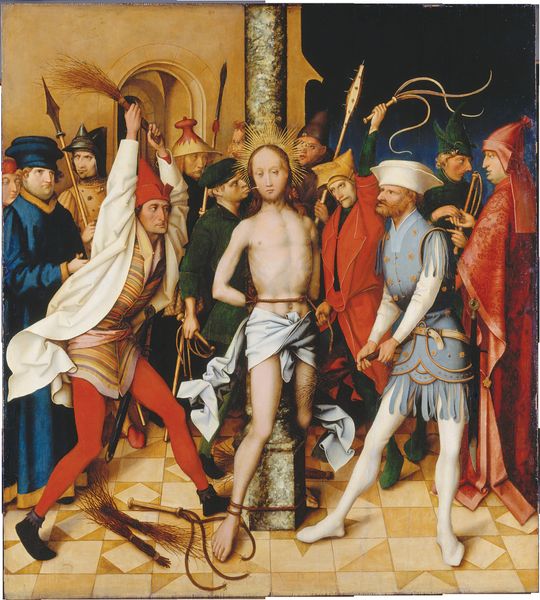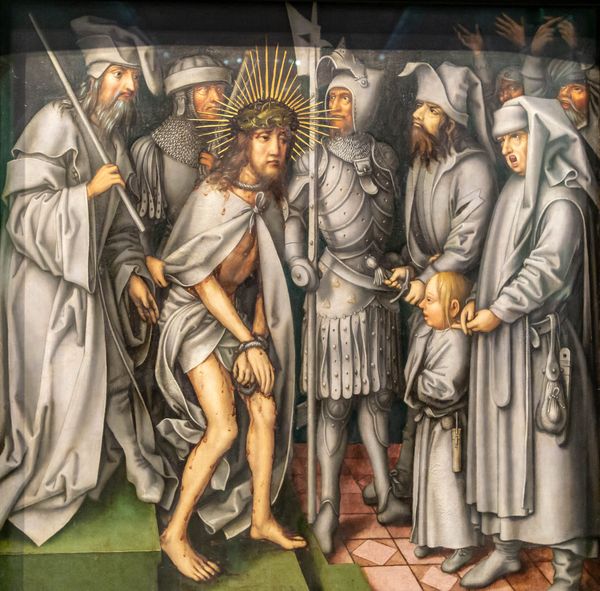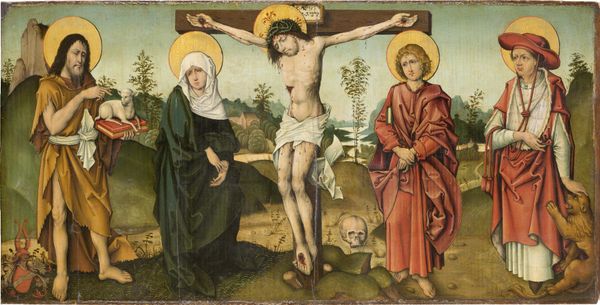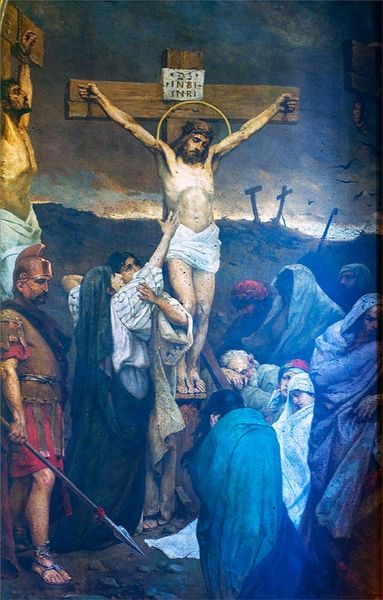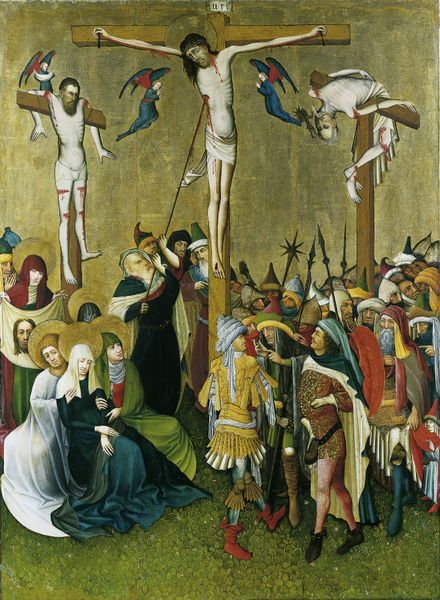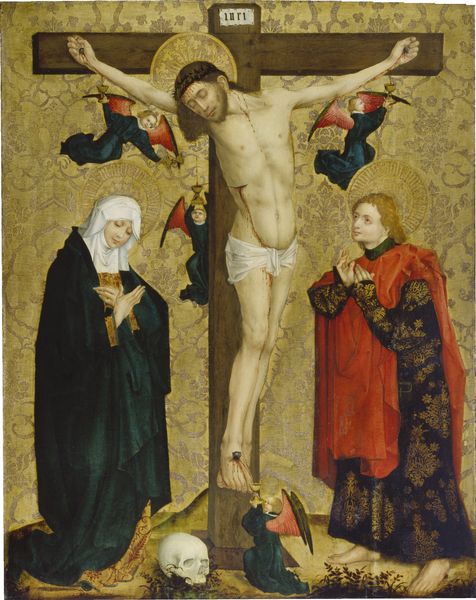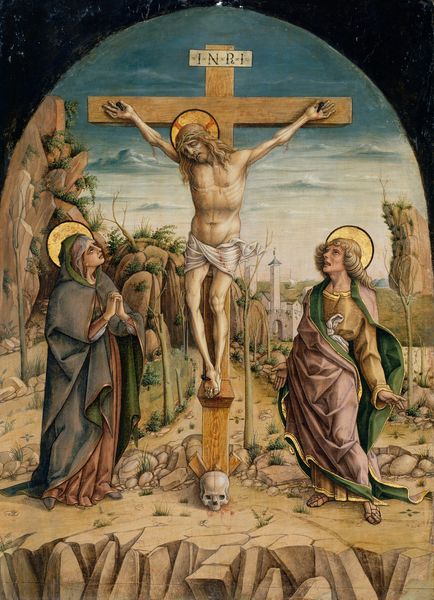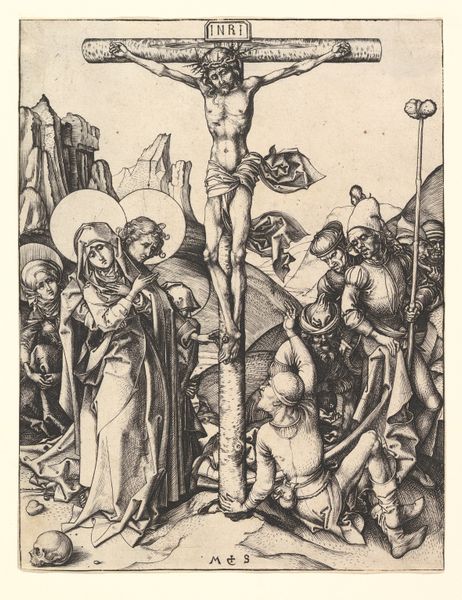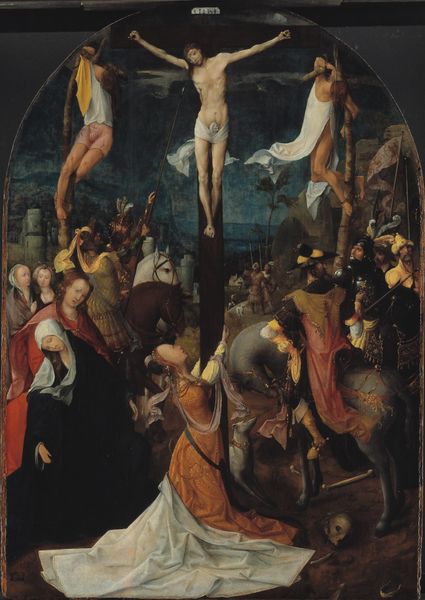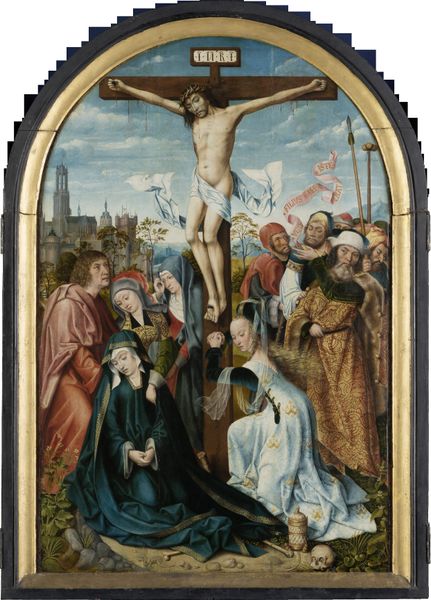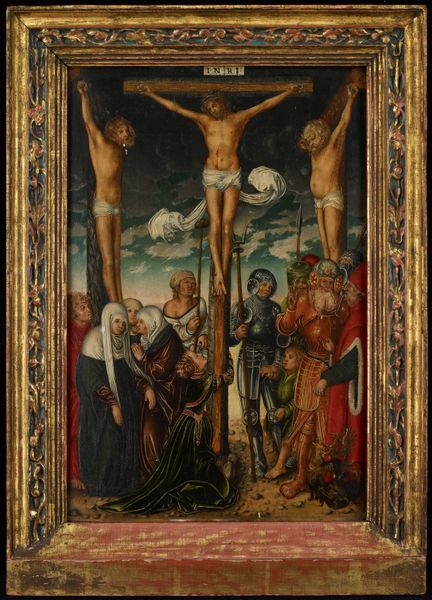
panel, oil-paint
#
panel
#
narrative-art
#
oil-paint
#
figuration
#
oil painting
#
mythology
#
history-painting
#
italian-renaissance
#
nude
Copyright: Public domain
Editor: This is *The Martyrdom of Saint Sebastian* by Hans Holbein the Elder, painted around 1516, on a wood panel in oil. The scene is obviously quite violent, but Saint Sebastian’s expression strikes me as almost serene. How do you interpret this work? Curator: Well, beyond the immediately recognizable theme of martyrdom, consider the enduring symbol of Saint Sebastian himself. His repeated depiction throughout history—riddled with arrows, yet often idealized—speaks to the cultural memory of resilience and faith. Do you notice how even the archers almost appear as decorative motifs, framing his figure? Editor: That's an interesting way to frame them! It definitely reduces the horror aspect of their actions. So what exactly *is* Saint Sebastian a symbol of? Curator: Precisely. Over time, Saint Sebastian became more than a religious figure; he's a potent symbol for surviving pain, be it physical or emotional. Also a symbol of beauty; consider how Holbein presents Sebastian's suffering – it's almost aestheticized, creating a tension between agony and idealized form. Does the rendering of pain and beauty seem contradictory or harmonious? Editor: I see what you mean! The smooth rendering and lighting downplay the torture while still acknowledging it. It’s like he’s a beautiful object to look at despite the situation. Curator: Right! And such depictions serve as cultural touchstones, reminding us of both our vulnerability and our capacity for enduring hardship. How powerful that image can be. Editor: That's given me a lot to consider, thank you. I now realize there's a deeper visual language happening beyond just the surface-level narrative of Saint Sebastian’s martyrdom. Curator: Exactly! Recognizing these repeating visual motifs and symbols opens new pathways to meaning across diverse times.
Comments
No comments
Be the first to comment and join the conversation on the ultimate creative platform.
